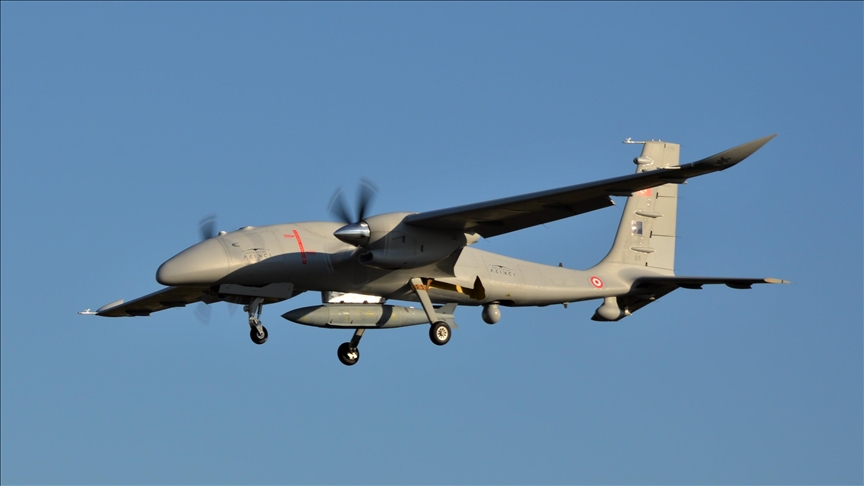ISTANBUL
In three questions, Can Kasapoglu assesses a recent deal by Turkish drone-maker Baykar with Saudi Arabia and its possible effects.
Why Did the Saudi Arabia Defense Agreement Turn Baykar Into a Geopolitical Actor?
Let us get to the conclusion right away; Turkish drone-maker Baykar has become a geopolitical actor through the lucrative Akinci strategic combat unmanned aerial vehicle (UAV) systems to the Kingdom of Saudi Arabia. The deal will boost Türkiye’s weight within the Euro-Atlantic camp. The agreement will lead to a wide range of outcomes, ranging from bolstering Riyadh’s capabilities in the Iran-Saudi Arabia military balance to countering China’s clout in the Middle East through arms sales. Here is why.
Not all defense deals are created equal, because they have varying geopolitical magnitudes. The geopolitical magnitude in question does not only stem from the combat efficacy of weapon systems transactions but also the political-military conjuncture. For example, the US providing Harpoon anti-ship missiles to Taiwan to defend against the Chinese Navy’s expansionist agenda or supplying the Ukrainian Armed Forces with M-142 High Mobility Artillery Rocket Systems (HIMARS) against Russian aggression loom large as telling cases in respect.
The UAV agreement signed between Baykar and the Kingdom of Saudi Arabia initially came into the spotlight for its defense economics dimensions. Indeed, the deal will probably mark one of the largest arms exports secured by the Turkish arms makers. The Saudi deal, however, is well beyond merely defense economics. To grasp the chief drivers behind the procurement, one should ask two questions. First, why did Saudi Arabia need the Akinci? Second, what does the Akinci sale to Saudi Arabia have to do with China’s Middle East policy and its great power competition strategy?
How Will the Akinci UAV Foster the Saudi Warfighting Deterrence?
The Akinci drone is the very beast that the Kingdom of Saudi Arabia needs, especially given its fire-power. With its large payload capacity, 45,000-feet operational altitude, advanced mission computers and weapon systems certifications, the Akinci baseline has gradually turned into a high-flying stand-off munitions carrier.
A closer look at the weapon systems configuration would tell more about the Saudi decision. Recently, the Akinci has gained aeroballistic missile launch capabilities through the TRG-230 Kaplan missile certification. Aeroballistic missiles pose a challenge to defense systems thanks to the combination of high strike angles and speeds. Additionally, their warheads are highly destructive.
Among the other notable weapon system configurations are the Stand-off Medium-Range Munition (SOM) cruise missile, Cakir mini-cruise missile, and Kemankes loitering munitions. (Baykar-produced UAV-certified kamikaze drone with electro-optical camera). The characteristics of cruise missiles and kamikaze drones are very different from those of aeroballistic missiles. The latter assets are designed to approach their targets at lower speeds, at much lower altitudes, and with complex maneuvers taking advantage of terrain masking. Their operational purpose is to exploit gaps in enemy radar networks and sensors. Of these systems, Kemankes is not only a strike asset but also an intelligence booster.
Any weapon system functions in the realm of concepts of operations. In a hypothetical warfighting scenario, imagine numerous Akinci drones launching deep-strikes on valuable targets behind enemy lines using TRG-230 Kaplan aeroballistic missiles, SOM cruise missiles, Cakir mini-cruise missiles, and Kemankes loitering munitions. Each weapon system released would approach the targets with different flight characteristics, from different angles, and at different speeds. The attack would be completely robotic in nature. In such a salvo, the combination of diverse munitions and robotic platforms would be highly destructive while being casualty-aversive.
But what kind of threat environment does Saudi Arabia face that it needs the Akinci drone? To understand the Kingdom’s defense requirements, one needs to revisit a series of incidents, including the 2019 Aramco attacks, the Houthi missile and drone salvos launched from Yemen, as well as Iran’s missile and unmanned systems proliferation programs.
Over the recent years, Iran and its proxies have turned to operational designs using loitering munitions in combination with ballistic and cruise missiles. The convergence of stand-off weapons and robotic warfare systems lead to an offense-dominant regime against known air defenses. In fact, even a small number of weapon systems breaking through traditional air defense systems can have sensational effects. Examining the political and economic consequences of the Aramco attacks would be illuminating in this respect.
With its strategic weapon system configurations, the Akinci will play a crucial role in Riyadh’s counteroffensive capabilities. Thus, Baykar’s success will also provide significant advantages to Turkish missile solutions in the highly profitable Gulf market.
What is the China Dimension of the Baykar-Saudi Deal and its Significance for the US?
Saudi military experts know that they cannot effectively respond to the regional missile and robotic warfare threat solely through expensive air and missile defense systems purchases.
This is why Saudi Arabia has both a ballistic missile program and significant purchases of UAVs. Of course, another purpose of the ballistic missile program is to serve as a means of delivery as part of Saudi Arabia’s plans to develop nuclear capabilities in a scenario where Iran comes to possess nuclear arms.
For now, let’s set aside the nuclear issues and solely conventional warfare aspects.
China comes into the forefront in meeting Saudi Arabia’s offensive deterrent requirements. This is because Saudi Arabia’s traditional arms suppliers, American arms makers, have been unable to export offensive strategic weapon systems to Riyadh due to Washington’s self-exercised restrictions.
With the Akinci sale to Saudi Arabia, Baykar has positioned Türkiye as a NATO country capable of balancing China in the unmanned aerial combat systems segment of the Gulf-Arab market, one of the world’s most lucrative weapons markets.
Also, the Akinci will in a short time become a significant player in the military balance between Iran and Saudi Arabia once Riyadh adds the armed UAV to its arsenal.
From counterbalancing Iran to snatching up China’s share in the Gulf Arab market, we are talking about significant geopolitical business here.
*Opinions expressed in this article are the author’s own and do not necessarily reflect the editorial policy of Anadolu Agency.

